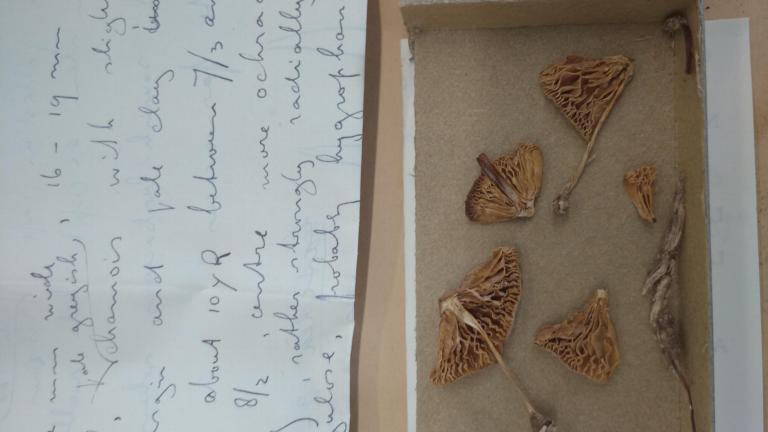
I am an evolutionary biologist fascinated by one of the most diverse kingdom of life: Fungi.
I investigate genome architecture variation between and within closely related species in understudied mushrooms. In the last 200 years, a large part of fungal biodiversity has been preserved in Fungarium collections such as the one at Naturalis, and classified mainly on morphology. I use and develop state-of-the-art technologies to study mushroom DNA at the genomic level, to refine species identification and investigate evolutionary relationships.
Studying fungal biodiversity is crucial for its conservation: how can we protect what we cannot name?
Keywords
Genomics, Fungi, Speciation, Fungarium Collections, Bioluminescence, Mycena, Molecular systematics
Researchinterest
In Fungi, the number of actual species largely outnumbers formally identified and described species by 10-fold.
Despite Fungi playing a central role in balancing the health of all ecosystems and they represent one of the world's most biodiverse groups, they have been traditionally neglected by biodiversity monitoring programmes leading to a 50-year delay in conservation actions. By 2022, less than 650 fungal species have had their global conservation status assessed by the IUCN (International Union for Conservation of Nature) Red List of Threatened Species™, compared to thousands of plant and animal species (2022-2 Red List update, 9 Dec 2022). One of the major challenges associated to the global review of the extinction risk of Fungi lies in the scarcity of taxonomic data and consequently, the lack of ecological and distributional information. In a world that is failing to address a catastrophic biodiversity collapse, the importance of natural history collections and the use of new DNA-sequencing technologies to document this immense diversity is crucial.


GLiMMer Genomics of Luminescence in Mycena Mushrooms
Bioluminescence, the emission of light by living organisms, is a fascinating phenomenon that evolved independently more than 84 times across the tree of life. In Fungi, bioluminescence has a single, de novo origin and the majority of known bioluminescent species belongs to Mycena, a large and hyperdiverse genus of small mushroom-forming fungi in the Agaricales order (Basidiomycota). The genus counts >1000 described species and the non-bioluminescent members do not seem to form a monophyletic group. This implies a complex history of bioluminescence loss across Mycena species, potentially involving convergent and lineage-specific mechanisms.
In my Marie Skłodowska-Curie project GLiMMer "Genomics of Luminescence in Mycena Mushrooms" I investigate the birth and death of Bioluminescence in fungi using genome-scale approaches.
Keypublications
- Steensels J*, Gallone B*, and Verstrepen KJ. (2021). Interspecific hybridization as a driver of fungal evolution and adaptation. Nature Reviews Microbiology.
- Gallone B*, Steensels J*, Mertens S, Dzialo MC, Gordon JL, Wauters R, Theßeling FA, Bellinazzo F, Saels V, Herrera-Malaver B, et al. (2019). Interspecific hybridization facilitates niche adaptation in beer yeast. DOI: 10.1038/S41559-019-0997-9. Nature Ecology and Evolution.
- Gallone B*, Steensels J*, Prahl T, Soriaga L, Saels V, Herrera-Malaver B, Merlevede A, Roncoroni M, Voordeckers K, Miraglia L, et al. (2016). Domestication and Divergence of Saccharomyces cerevisiae Beer Yeasts. Cell.